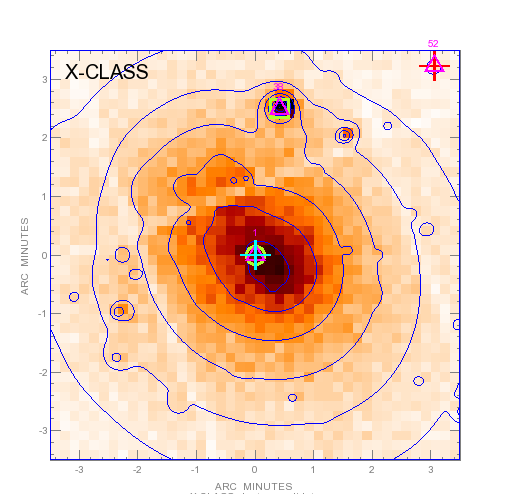Matter in the Universe is not evenly distributed but forms a cosmic web of filaments shaped by gravity, with galaxy clusters found at their intersections. Galaxy clusters are the largest bound entities in the Universe – they trace the highest density peaks in its large-scale structure, making them a powerful tool for answering questions about cosmology.

The XMM CLuster Archive Super Survey (X-CLASS) is an X-ray galaxy cluster search in the XMM-Newton Science Archive (XSA).The main goal of the survey is the compilation of a well-selected cluster sample suitable for cosmological analyses. The structure and evolution of the Universe is described by a set of cosmological parameters, which include the density of its various components and the rate that it is expanding. Currently, we know the value of many of these parameters fairly well, but large samples of cosmic tracers at a variety of distances are required to more accurately describe the underlying structure of the Universe.

The X-CLASS collaboration includes astrophysicists from several European countries, but also from around the world. The first set of 845 X-XCLASS clusters was released in 2012 (Clerc et al. 2012). This year, a new data catalogue was published in Astronomy & Astrophysics containing an astonishing 1646 clusters up to a redshift of z~1.5 (Koulouridis et al. 2021). Redshift of z~1.5 corresponds to 5 billions years after the Big Bang. The ultimate goal of the X-CLASS Survey is to provide an extensive, well-characterised catalogue of clusters that can be used to constrain the cosmological parameters.
The catalogue is publicly accessible online in https://xmm-xclass.in2p3.fr, via an interactive database constructed and maintained by the X-CLASS collaboration. It is the first time that such a catalogue is made available to the community via an interactive database which gives access to a wealth of supplementary information, images, and data.
